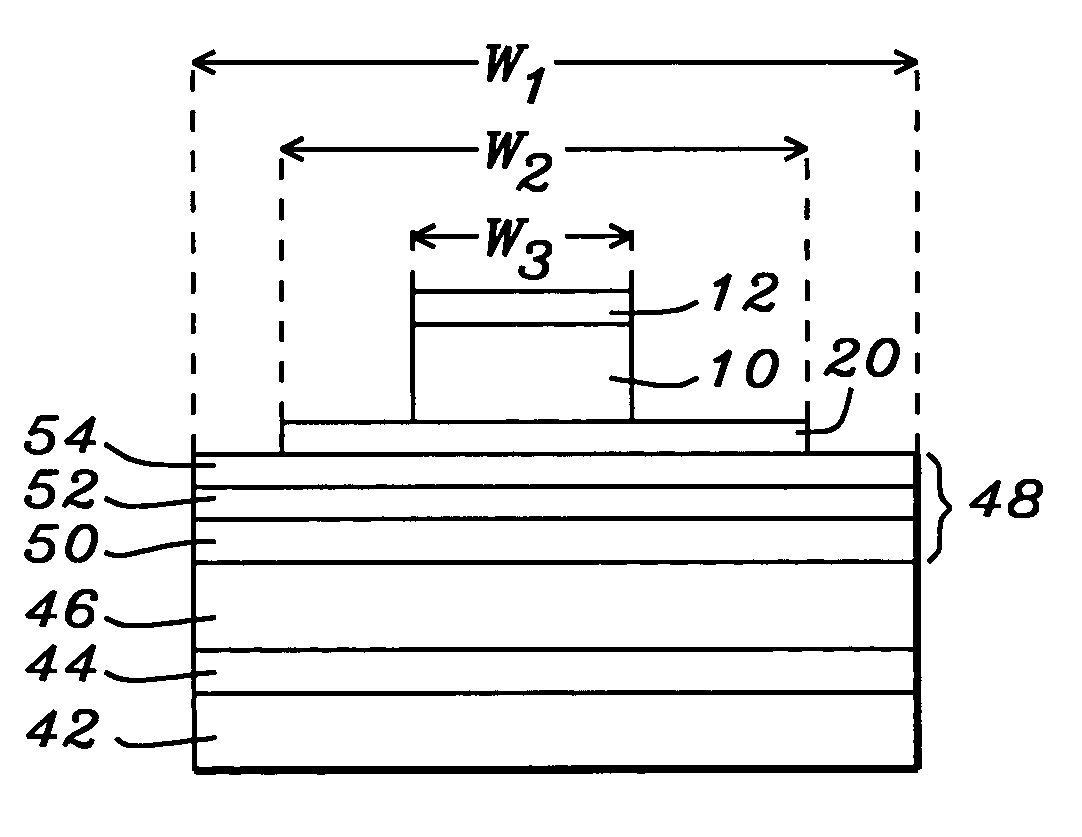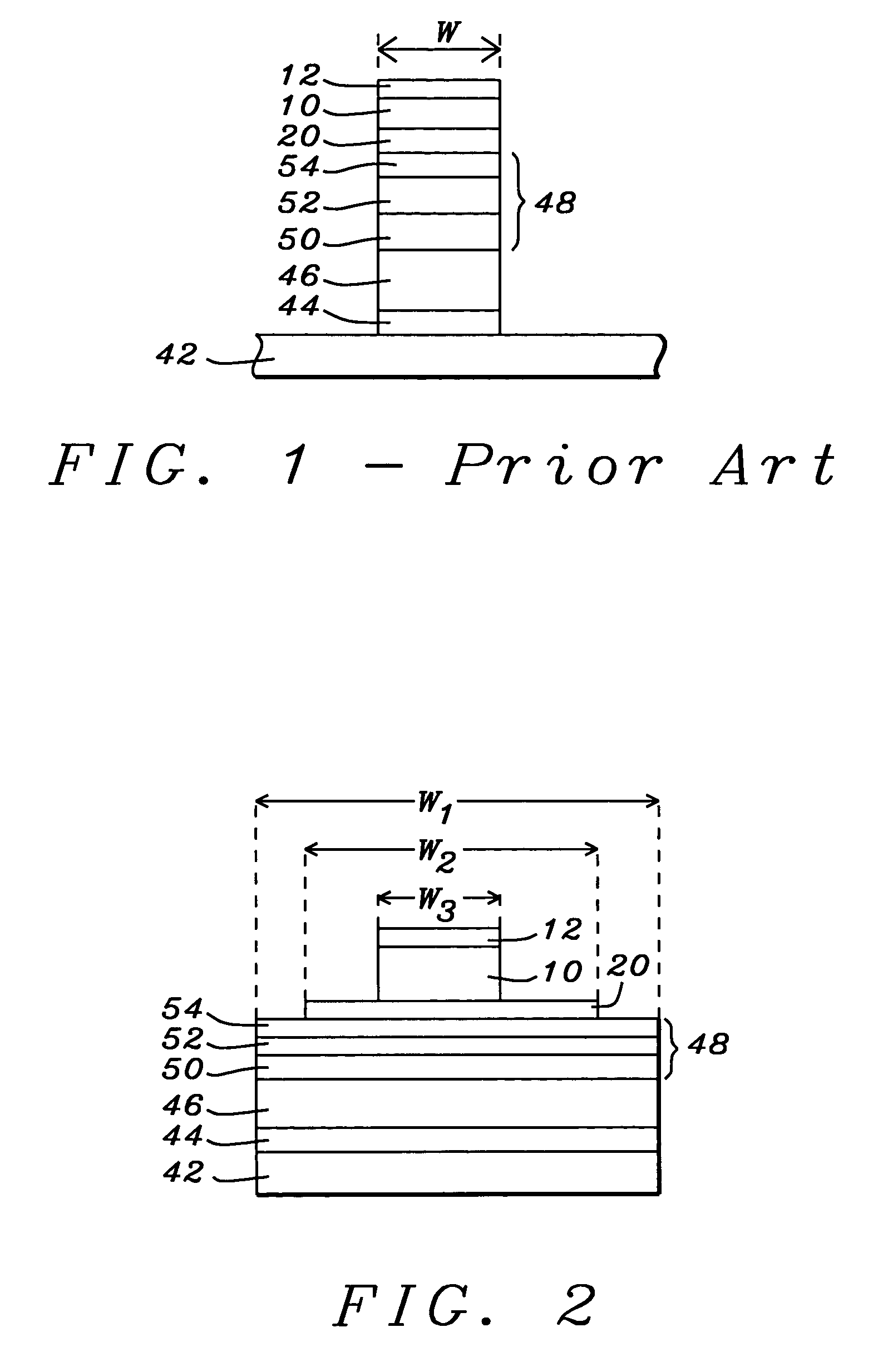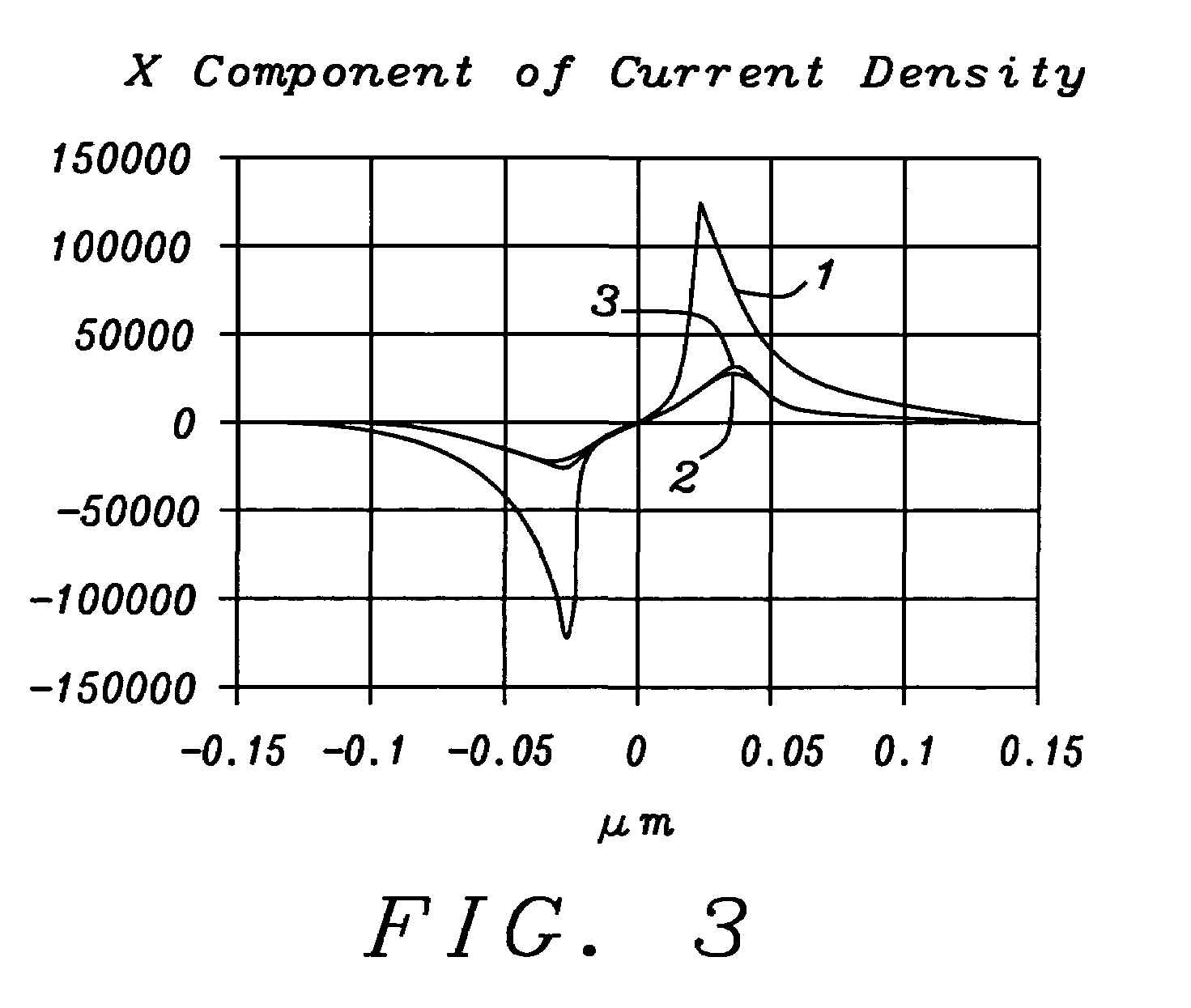Method of increasing CPP GMR in a spin valve structure
a technology of spin valve and gmr, which is applied in the field of giant magnetoresistive (gmr) magnetic field sensor fabrication, can solve the problems of loss of current (and sensitivity), adverse effects on the overall sensitivity of the sensor, and inability to meet the requirements of cpp configuration, etc., and achieves the retention of dr of such a stack, the effect of low resistance current and greatly reduced resultant resistan
- Summary
- Abstract
- Description
- Claims
- Application Information
AI Technical Summary
Benefits of technology
Problems solved by technology
Method used
Image
Examples
Embodiment Construction
[0022]The present invention is a GMR spin valve sensor in a CPP (current-perpendicular-to-plane) synthetic pinned layer spin-valve configuration having a novel geometry that improves sensor sensitivity, DR / R, by maintaining (or improving) DR, while significantly reducing R. The novel design includes a ferromagnetic free layer of very small cross-sectional area, centered on a conducting, non-magnetic spacer layer of larger cross-sectional area, with the spacer layer then being centered on the remaining GMR sensor stack which is of still larger cross-sectional area. The step-wise reduction in cross-sectional areas of the layers leads to reduced current density in the pinned layer as well as a more longitudinal current path, both enhancing the performance of the sensor.
[0023]Referring again to FIG. 2, there is shown a schematic view of the CPP GMR spin valve sensor provided by the present invention. What will be referred to herein as the GMR stack comprises the following: a lead layer ...
PUM
| Property | Measurement | Unit |
|---|---|---|
| thickness | aaaaa | aaaaa |
| thickness | aaaaa | aaaaa |
| thickness | aaaaa | aaaaa |
Abstract
Description
Claims
Application Information
 Login to View More
Login to View More - R&D
- Intellectual Property
- Life Sciences
- Materials
- Tech Scout
- Unparalleled Data Quality
- Higher Quality Content
- 60% Fewer Hallucinations
Browse by: Latest US Patents, China's latest patents, Technical Efficacy Thesaurus, Application Domain, Technology Topic, Popular Technical Reports.
© 2025 PatSnap. All rights reserved.Legal|Privacy policy|Modern Slavery Act Transparency Statement|Sitemap|About US| Contact US: help@patsnap.com



